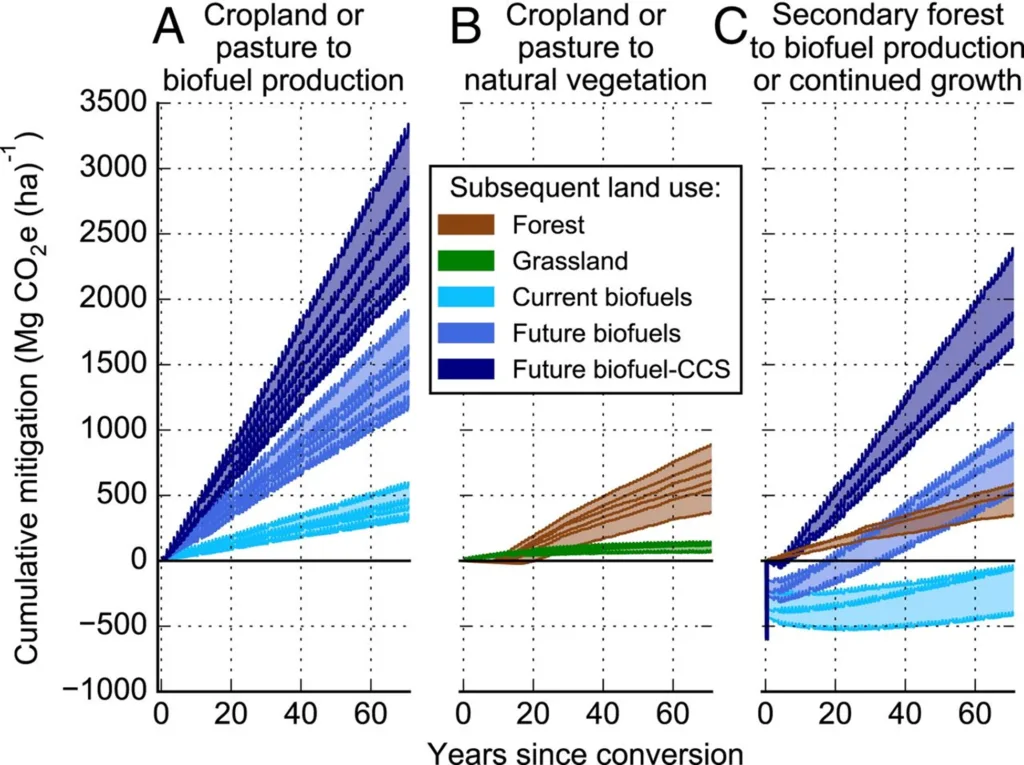Robust Paths to Net Greenhouse Gas Mitigation and Negative Emissions via Advanced Biofuels
Themes: Feedstock Production
Keywords: Modeling
Citation
Field, J.L., Richard, T.L., Smithwick, E.A.H., Cai, M.S., Laser, M.S., LeBauer, D.S., Long, S.P., Paustian, K., Qin, Z., Sheehan, J.J., Smith, P., Wang, M.Q., Lynd, L.R. Aug. 18, 2020. “DayCent Data and Results for ‘Robust Paths to Net Greenhouse Gas Mitigation and Negative Emissions via Advanced Biofuels.’ “ Figshare. DOI: 10.6084/m9.figshare.5760768.v1.
Overview

This zip file contains a UNIX-format DayCent model executable, input files, automation code, and associated directory structure necessary to re-produce the DayCent analysis underlying the manuscript. The main script “autodaycent.py” (written for Python 2.7) opens an interactive command line routine that facilitates:
- Calibrating the DayCent pine growth model;
- Initializing DayCent for a set of case studies sites;
- Executing an ensemble of model runs representing case study site reforestation, grassland restoration, or conversion to switchgrass cultivation; and
- Results analysis & generation of manuscript Fig. 3.
Note that the interactive analysis code requires that all input files to be contained in the directory structure as uploaded, without modification. Executable versions of the DayCent model compatible with other operating systems are available upon request.
Data
Illinois Data Bank: Supplemental data and information